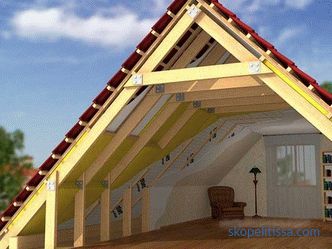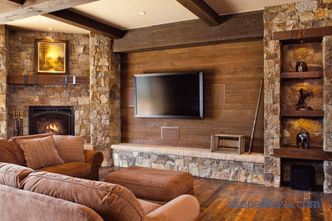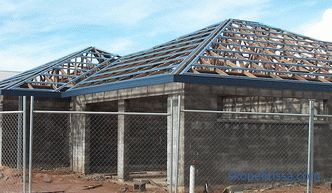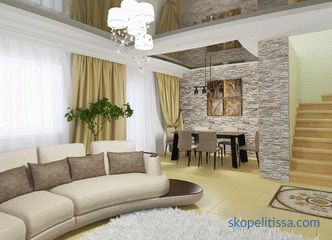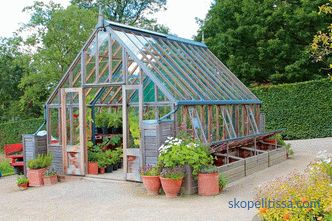"The garden itself, as a growing organism, becomes more expensive every year, unlike, say, even the most stylish and expensive house with a high-quality repair. Together with trees and shrubs, their price also grows. A house with a garden is sold for about 30% more expensive than without it. The organization of the garden planting process requires a lot of effort, patience, professional knowledge and means. But you need to understand that there is a huge difference between landscape architecture and gardening. Determining the task correctly determines whether the garden will be a profitable investment or will be expensive burden for its owner. There are laws in landscape architecture, but no matter how beautiful the flowers, trees, bushes planted in your garden, without a correct location in space, are just beautiful plants and only.
And Just as in the modern approach of the capital's mayors to the arrangement of urban public spaces, private customers sometimes have a confusion between landscaping with the replacement of benches, laying paving stones instead of asphalt and the architectural approach to the development of territories.
The architectural approach to creating a garden initially involves a thorough development of the project, which can take from three months to a year. Landscape architect must take into account not only the wishes of the customer, but also all the features of the territory and the existing architecture. It is very important to be able to feel the space and manipulate it. The landscape architect is the organizer of the space, who should know not only related disciplines, such as dendrology, geodesy, soil science, etc., but also be a psychologist, feel the client, be able to convey his idea to him and make him an accomplice in the process. During the design, manipulating the elevations, the architect can truly work wonders: a small area will visually expand, and flaws can turn into advantages. In the project, provided to the customer, there are more than 16 points.
Among them: A draft design is an idea that is drawn on a geological basis provided by a surveyor; The master plan is an elaborated idea, approved by the customer; Vertical layout, where each surface has its own elevation, on which the garden geoplastics will depend on; Territory balance is a condition necessary for counting materials; Earthen mass cartogram - how much to remove and where to move the ground; The centering plan - which will help to bring to life the paths, playgrounds, etc., without the help of a surveyor; Materials - in what quantity and what material will be paved paths, retaining walls are trimmed; Lighting - selection of lamps and their localization; Dendroplan - placement of trees and shrubs on the plan with their name; Assortment statement - names and number of plants; Plan flower beds - placement of flowers with the norm of landing on the square. m Visualization - drawing the most interesting places in the garden or the whole garden; MAFY - small architectural forms, if any, for example, swings, benches, gazebos, garden fireplaces, etc. But, as a rule, they are designed for a fee; And the project also includes: irrigation plan, storm sewage plan - organization of storm water removal and drainage plan - groundwater drainage.
Initially it is very important to create a competent skeleton of the future garden from the path network, which will allow the garden to be divided into zones. Moving through the garden, the view should not "stumble" about unnecessary details. Walking along the paths, there should be a feeling of comfort, as if you were moving from one room to another. And in each room you find something new, but at the same time so familiar. In other words, it is very important to maintain the garden in the same style. But perhaps the most important thing in the design is to strictly follow a given topic, which all must obey.
I often give names to my gardens, which are suggested to me by the architecture of the house and its surroundings and the preferences of the client. The names of these projects speak for themselves: “House on 7 hills”, “125 steps down”, “Tyrolean tunes”, etc. Having given the name of the garden, it is already easier to proceed with the next stage and fill it with details.
In particular, my last work at the exhibition of houses " Low-Rise Country " at the White Dacha I gave the name "Silver Garden". The idea was to make the garden year-round - fragrant and flowering in summer, concise and self-sufficient in winter. At the same time, the constant traffic of visitors was taken into account, and up to 2,500 people a day pass them, and the need to organically enter the exhibition garden into the already existing terrain, and that the garden should have been a continuation of not one house, but 36 houses at once, made by various technologies. The key element that unites all exhibition houses is hydrangeas. These plants are unpretentious and easy to clean.Numerous types of hydrangea, planted in front of buildings, will bloom from July to the first snow. In October - November, spherical and pyramidal inflorescences covered with frost look very picturesque. In order to make the garden happy in the winter, spherical thuja were planted on the hills in the gravel garden, and although they are still small in size, time works on them: growing together they will resemble soap bubbles. There is also a Japanese garden at the exhibition: beautifully laid stones will soon be tightened with placers of pink fragrant carnations and soap bubbles from thujas. There is also a real Japanese stone lantern made according to my sketch. Very interesting lighting in this garden will attract the attention of lovers to take a walk in the evening. And in narrow stripes between arbors numerous plants with silvery color of foliage were planted, therefore this corner is called "silvery garden". Colony-shaped junipers of skyrocketts have needles of silver-blue outflow, are buried in cereals of pharice and spike. The silver motif is complemented by such bushes as purple willow nana and silver-sucker. Costly perennials will grow in a year and will occupy almost the entire free area. Until then, blooming annuals - pink cornflowers, kosmeya and matheola (night violet) with delicate silvery leaves, will fill the eyes of visitors, filling the air with a fragrant aroma. Also among the perennials are planted vatochnik (a very fragrant perennial attracting butterflies) and purple sacron, dissecting the grass with lilac-pink verticals. Such a garden is unpretentious in care and at any time of the year it will not look boring or neglected, and over time it will only become more interesting and picturesque. "
The cost of an architect’s work at the project development stage is difficult to estimate. It all depends on the degree of complexity of the work, influences the pricing and the name of the architect. work, landscaping and the cost of materials in general, everything that forms the landscape, Elena Astashkina estimates approximately half the cost of the box of the house itself, from the concept of which it repels.
Rate this article, we tried for you with
